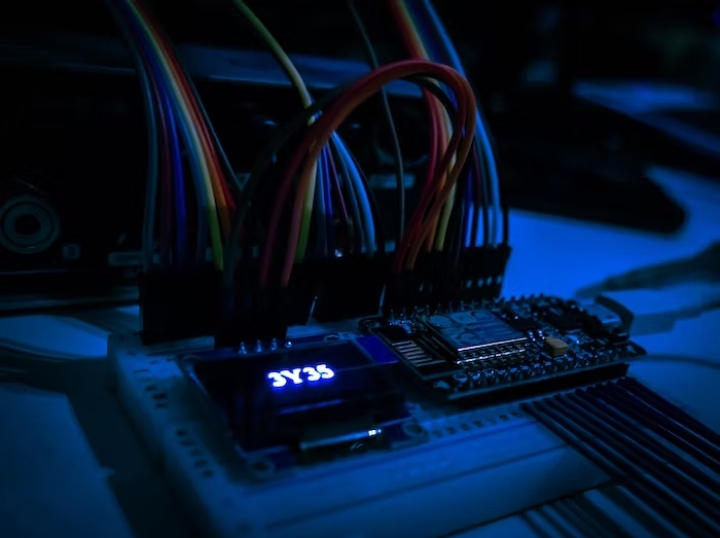What Are VPCs and Subnets in Cloud Computing & How Do They Work?

You may come across these terms if you use cloud computing. But what exactly do they mean?
Cloud computing has significantly changed our perception of computing resources.
Cloud providers have eliminated the need to worry about expensive hardware or maintenance of complicated infrastructures, allowing users to access and set up low- to high-end computing resources on demand at minimal rates.
VPCs and subnets are terminology that you may come across in the world of cloud computing. So, what are they and how do they work?
What is Cloud Computing?
Before diving into VPCs and subnets, let’s briefly touch upon cloud computing. In simple terms, cloud computing refers to the delivery of computing services over the internet. Instead of building and maintaining physical infrastructure, businesses can leverage cloud providers’ resources to store data, run applications, and perform various computational tasks.
What is a Virtual Private Cloud (VPC)?
A Virtual Private Cloud (VPC) is a logically isolated section of a cloud provider’s infrastructure that enables you to create your own virtual network. It provides a secure and private environment for your applications, mimicking the traditional on-premises network architecture in a virtualized form. With a VPC, you have full control over the network configuration, IP addressing, and routing.
A VPC is similar to on-premise infrastructure in that you set up and configure all of your computing resources in a single location because you own them all. The only difference is that you do not own or manage the hardware, and you can quickly scale up or down your infrastructure based on your needs.
Search for the VPC service on leading cloud platforms such as AWS, Google Cloud, and IBM Cloud; on Azure, it’s called virtual network; and on Oracle, it’s called virtual cloud network.
How Does a VPC Work?
Having known that a VPC allows you to construct a network of resources in a logically isolated area of the cloud, it is important to understand how VPCs work.
When you create a VPC, you may choose a range of IP addresses for it. This IP address range splits the VPC into subnets, which can be further subdivided as needed.
Each subnet is coupled with a single availability zone, which is an unique physical location within the structure of a cloud provider. To restrict network access and traffic flow, you must also setup security groups (firewalls), access control lists, and route tables.
Read Also: CAMM vs. SODIMM: What Is It and What’s the Difference?
Key Components of VPC
To understand how VPCs and subnets work, it is essential to grasp their key components. The primary elements of a VPC include:
Internet Gateway: This allows traffic to flow between your VPC and the internet.
Route Tables: These define the traffic routing within your VPC.
Network Access Control Lists (ACLs): ACLs act as virtual firewalls, controlling inbound and outbound traffic at the subnet level.
Security Groups: These are virtual firewalls that regulate traffic at the instance level.
Elastic IP Addresses: These are static IP addresses that you can associate with your resources to ensure consistent accessibility.
What Is a Subnet?
“Subnet” is short for “subnetwork.” In cloud computing, a subnet refers to a logical division of an IP network. It allows you to divide a larger network into smaller, more manageable segments. Just like in a traditional network, a subnet in cloud computing helps in organizing and controlling network traffic.
Think of it as a virtual neighborhood within a larger city. The city represents the overall network, and each neighborhood represents a subnet. Each subnet has its own range of IP addresses and can have its own specific rules and configurations. Subnets are usually created to group resources that need to communicate with each other frequently, enabling efficient and secure communication.
For example, in a cloud infrastructure, you might have different subnets for web servers, application servers, and database servers. By placing related resources in the same subnet, you can control access between them and apply specific security measures.
Subnets also play a role in routing and network management. They can be associated with a routing table that determines how traffic flows between subnets and the outside world. Additionally, subnets can be connected to each other or to on-premises networks through virtual private networks (VPNs) or other networking technologies.
Types of Subnets in Cloud computing
In cloud computing, subnets are used to divide and manage the IP addresses within a network. There are typically two types of subnets that you’ll encounter: public subnets and private subnets.
Public Subnets: A public subnet is a subnet that has direct access to the internet. Instances deployed in a public subnet are assigned a public IP address and can communicate directly with resources on the internet. These subnets are often used for resources that need to be publicly accessible, such as web servers or load balancers.
Private Subnets: A private subnet, on the other hand, is a subnet that doesn’t have direct internet access. Instances deployed in a private subnet are typically assigned private IP addresses and cannot communicate directly with the internet. Instead, if they need to access internet resources, they typically rely on a network address translation (NAT) gateway or a proxy server located in a public subnet.
Private subnets are commonly used for internal resources that don’t need to be publicly accessible, such as database servers or backend services. They provide an additional layer of security by restricting direct access from the internet.
Read Also: What Is a Reverse Proxy and How Does It Work?
Benefits of Using VPC and Subnets
Utilizing VPCs and subnets offers several benefits:
Enhanced Security: VPCs provide isolation and control, allowing you to set up robust security measures and access controls for your resources.
Scalability: With subnets, you can easily scale your infrastructure by adding or removing resources within specific network segments.
Flexibility: VPCs allow you to customize your network configuration, IP addressing, and routing, giving you the flexibility to tailor your cloud environment to meet your specific requirements.
How VPCs and Subnets Work Together
VPCs and subnets work together to create a secure and efficient cloud environment. When you create a VPC, you define its IP address range, subnets, and routing tables. Each subnet is associated with a specific availability zone, ensuring redundancy and fault tolerance.
Within each subnet, you can deploy your virtual machines, databases, and other resources. The subnets act as isolated segments, allowing you to control traffic flow and implement granular security measures. You can assign security groups and network ACLs to regulate inbound and outbound traffic at both the subnet and instance level.
VPCs also provide the ability to connect to the internet through an internet gateway. This allows your resources within the VPC to communicate with external networks, such as accessing the internet or connecting to other cloud services.
VPC vs. VPN
Both VPCs and VPNs (Virtual Private Networks) provide secure connectivity, but they serve different purposes. A VPC is a virtual network within a cloud provider’s infrastructure, offering isolation, scalability, and control over network configuration. It is primarily used for creating private cloud environments.
On the other hand, a VPN is a secure connection established over the public internet, allowing remote users or offices to access resources within a private network securely. VPNs are commonly used to provide secure remote access to an organization’s on-premises resources or to connect multiple on-premises networks.
Read Also: What Is Pixel Binning in Mobile Photography? How Does It Work?
Conclusion
VPCs and subnets are fundamental components of cloud computing, providing secure, scalable, and customizable network environments. VPCs allow you to create isolated virtual networks, while subnets enable further segmentation and organization of resources.
By understanding the key components of VPCs, the benefits they offer, and how they work with subnets, you can design and deploy a robust cloud infrastructure. Leveraging features such as security groups, NAT, load balancing, and VPC peering, you can enhance the security, availability, and performance of your applications and services.
Embracing VPCs and subnets empowers businesses to leverage the full potential of cloud computing, enabling them to scale seamlessly, optimize costs, and establish a reliable and secure network foundation.
FAQs
What is the difference between a VPC and a subnet?
A VPC is a virtual private cloud that provides an isolated environment within a cloud provider’s infrastructure. Subnets are subdivisions within a VPC that allow further segregation and organization of resources.
Can I have multiple subnets within a VPC?
Yes, you can have multiple subnets within a VPC. Subnets allow you to organize resources and provide granular control over network configuration and access controls.
How does VPC ensure security?
VPCs provide security through isolation, network ACLs, and security groups. Each subnet within a VPC acts as a security boundary, and you can control inbound and outbound traffic using ACLs and security groups.
How can I ensure high availability in a VPC?
High availability in VPCs can be achieved by distributing resources across multiple availability zones (AZs) and utilizing features like load balancers, auto scaling, and failover mechanisms.
Can I connect my on-premises network to a VPC?
Yes, you can establish a secure connection between your on-premises network and a VPC using a VPN connection. This allows you to extend your network infrastructure into the cloud and securely access resources within the VPC.
Can I modify the IP address range of an existing VPC?
No, you cannot modify the IP address range of an existing VPC.
Is it possible to establish communication between VPCs in different AWS accounts?
Yes, you can establish communication between VPCs in different AWS accounts using VPC peering. VPC peering allows secure communication between VPCs, regardless of the AWS accounts they belong to.
Can I change the subnet associated with an instance in a VPC?
No, once an instance is launched in a subnet, you cannot change the subnet association of that instance. You would need to terminate the instance and relaunch it in the desired subnet.







